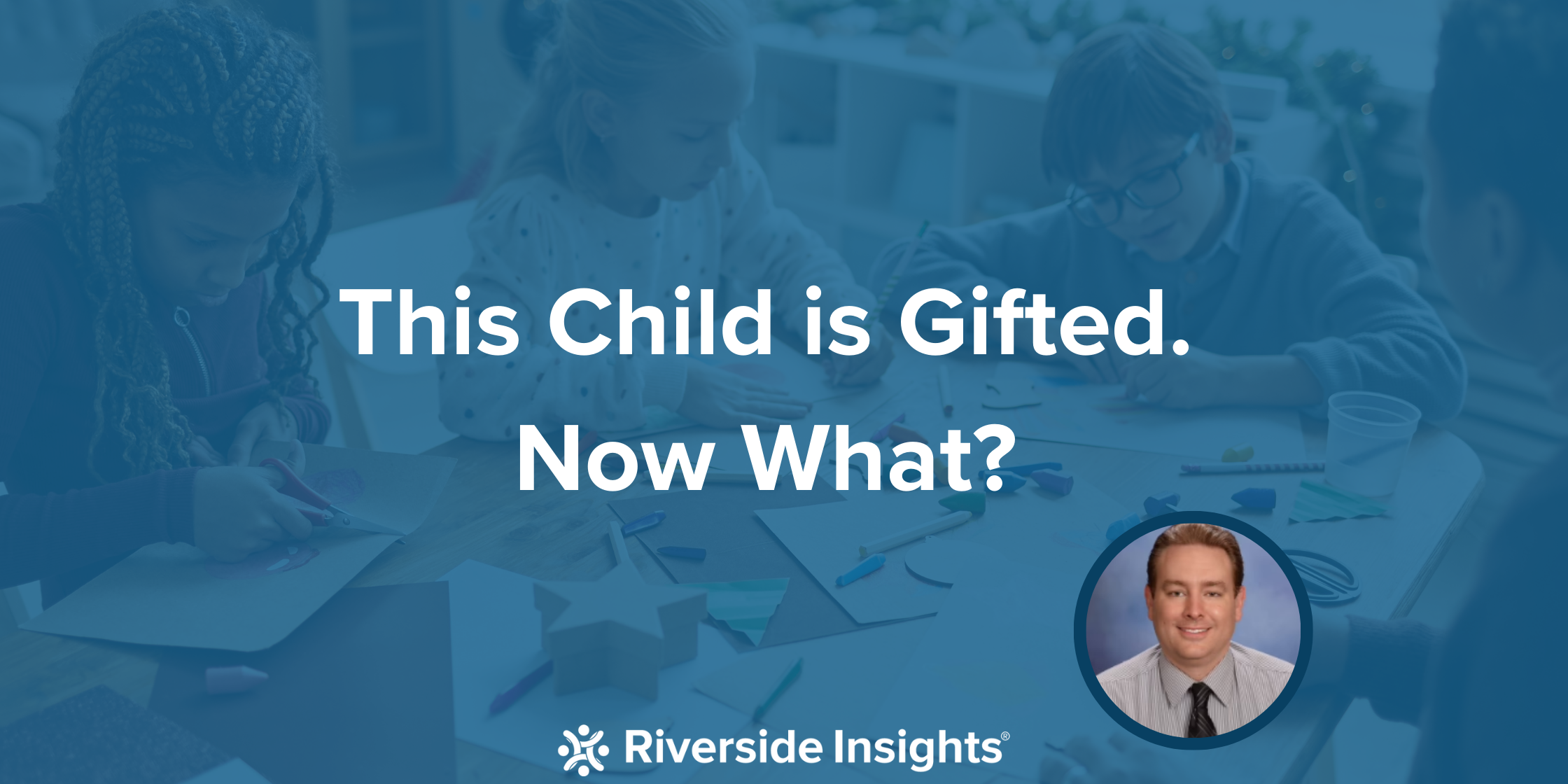This Child is Gifted. Now What?

School communities often have robust processes for identifying gifted and talented students through assessments like the Cognitive Abilities Test™ (CogAT®), but the systems within schools occasionally fall short of providing these gifted students with learning experiences that fuel their intellectual fire to enable them to reach their potential. Riverside Insights recently hosted a webinar with gifted guru Adam Laningham to hear his thoughts and best practices for building a system capable of supporting gifted students with the resources and structures necessary for them to thrive.
Laningham’s career path into the gifted and talented realm came about organically. In his teaching role, he felt drawn to gifted education certification classes, which led to him teaching gifted classrooms until he took over restructuring gifted programs at the district level. Currently, Adam serves as consultant to gifted and talented programs and as Co-President Elect of SENG (Supporting Emotional Needs of the Gifted, and he is a coauthor of two books: THINKology 2.0 and Gifted Children and How Trauma Impacts Them.
1. Gifted
2. High Achieving
3. Middle of the Road
4. Special Education (SpEd)
5. English Language Learners (EL)
Expecting teachers to cater their lessons toward all five groups of students isn’t fair to the students or the teachers. The teachers stretch themselves too thin, and the students don’t receive the specialized instruction for their ability level. Instead, Laningham suggests “narrowing the spectrum,” or organizing classrooms so that each teacher can focus on three of the five categories at a time.
Additionally, he advises clustering Gifted, SpEd, and EL students in separate classes since each of these three groups require specialized teacher training and teaching methods. Allotting spaces for Gifted students or High Achieving students in each class ensures every classroom has role models and hard workers both to make the teachers’ experience more enjoyable and to give other students an example to strive for.
While classroom organization depends on the given student population and available teachers, a sample breakdown across classrooms (courtesy of Laningham) might look like this:

One strategy Laningham employed in his district to challenge gifted students was to align the daily schedule of subjects throughout all grade levels. In that model, third graders who evidence giftedness in math, for instance, can simply walk to the fourth-grade math class during the scheduled math period, and nobody skips a beat. In cases where the next level math class is on a different campus (such as the jump from elementary to middle school) Laningham either bused the students over or had them join those classes online.
Laningham also emphasizes the importance of offering professional development for all teachers regardless of their concentration area. In his most recent district, he brought in speakers, provided teachers with free and paid classes, and hosted book studies in order to maintain and sharpen teachers’ tactics. With regard to professional development for gifted and talented students, Laningham says, “90% of our training was social-emotional, because if gifted students aren’t feeling valued and engaged, they’re not going to do the work.”
Finally, here are three best practices to optimize gifted programs:
1. Testing in January/February allows time to plan class assignments for the following year and allows time for optimal staffing for the given student population
2. Twice-exceptional (2e) students can be included in the gifted cluster classroom, then they’re pulled out for intervention and support in the appropriate area of need
3. Gifted students need action and differentiation. Burning out in middle and high school isn’t always the students’ fault. Take a look at what’s going on in the classroom for these students, because it might be too structured and dull to stimulate the brains of the gifted population.
For additional insight, watch the full-length webinar,
This Child is Gifted. Now What?
.png?width=900&name=Add%20a%20heading%20(10).png)


-1.png)